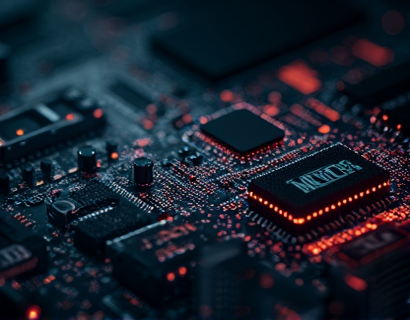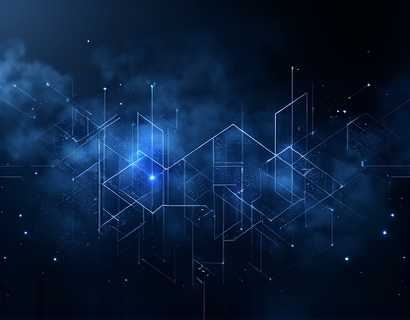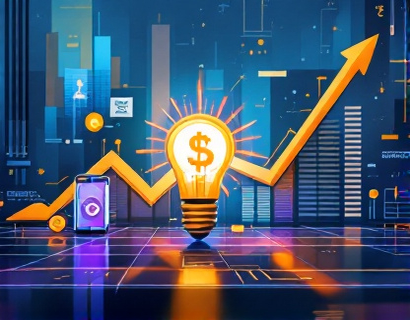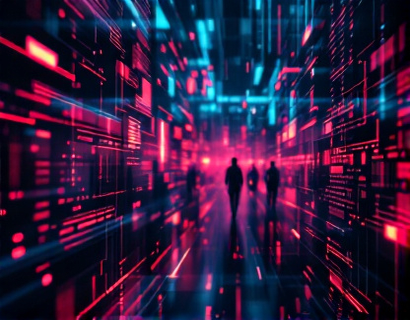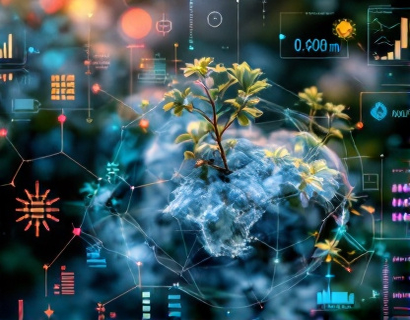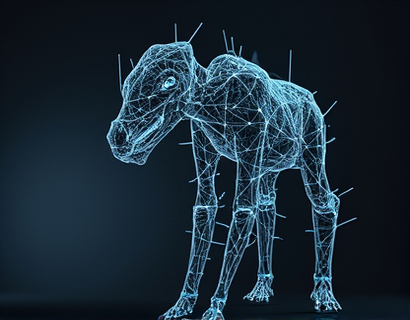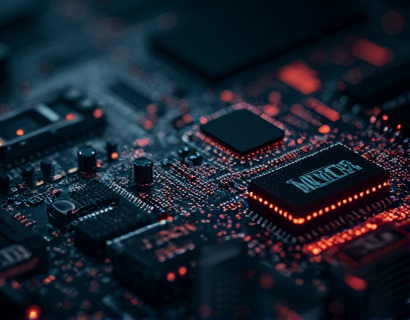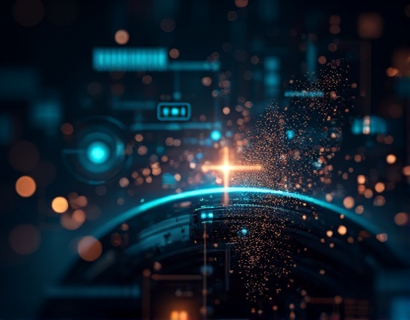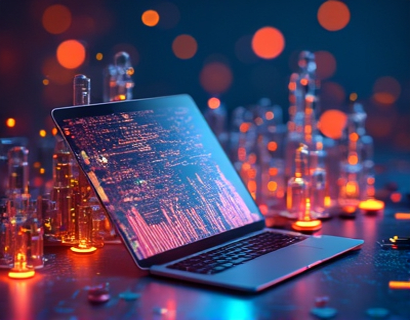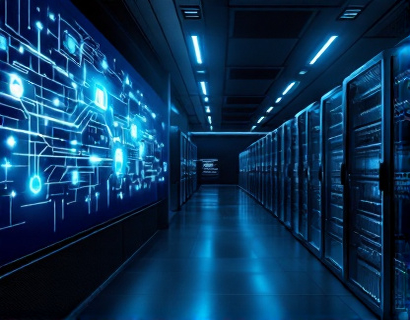Empowering Early Adopters: The Synergy of Crypto and AI in Next-Gen Productivity
The intersection of cryptocurrency and artificial intelligence (AI) is giving rise to a new era of productivity tools that are redefining how tech enthusiasts and early adopters approach daily tasks. This article delves into the innovative platforms and applications that leverage the power of both technologies to create an advanced ecosystem designed to simplify and enhance productivity. For those who are at the forefront of technological advancements, understanding how these tools work and how they can be integrated into daily life is crucial.
Understanding the Basics: Cryptocurrency and AI
To fully appreciate the potential of crypto and AI-driven productivity solutions, it's essential to have a basic understanding of both concepts. Cryptocurrency, often referred to as digital or virtual currency, uses cryptography for security and operates on a decentralized network known as a blockchain. This technology ensures transparency, security, and immutability, making it an ideal foundation for various applications beyond just financial transactions.
Artificial intelligence, on the other hand, involves the simulation of human intelligence processes by machines, particularly computer systems. These processes include learning (the acquisition of information and rules for using it), reasoning (using rules to reach approximate or definite conclusions), and self-correction. When combined, crypto and AI can create powerful tools that not only enhance security and transparency but also introduce intelligent automation and data-driven insights.
The Rise of Crypto and AI in Productivity Tools
The convergence of crypto and AI has led to the development of innovative platforms that offer a range of productivity enhancements. These platforms utilize blockchain technology to ensure data integrity and security, while AI algorithms optimize tasks, provide intelligent recommendations, and automate repetitive processes. For early adopters, this means access to a suite of tools that can significantly elevate their productivity and efficiency.
One of the key advantages of these platforms is their ability to operate on a decentralized network, reducing reliance on centralized servers and minimizing the risk of data breaches. AI-driven analytics can process vast amounts of data to identify patterns and trends, offering users insights that can inform better decision-making. Additionally, smart contracts on the blockchain can automate agreements and transactions, reducing the need for intermediaries and speeding up processes.
Enhanced Security and Privacy
Security and privacy are paramount concerns for users of digital tools, especially those involving financial transactions or sensitive data. The integration of crypto and AI in productivity platforms addresses these concerns by providing robust security measures. Blockchain's inherent security features, combined with AI's advanced encryption techniques, create a formidable defense against cyber threats.
Moreover, the decentralized nature of blockchain ensures that user data is not stored in a single vulnerable location. Instead, it is distributed across a network of nodes, making it extremely difficult for hackers to compromise. AI can further enhance security by detecting and mitigating potential threats in real-time, providing an additional layer of protection for user data.
Intelligent Automation and Task Optimization
One of the most exciting applications of AI in productivity tools is intelligent automation. AI algorithms can analyze user behavior and preferences to automate routine tasks, freeing up time for more critical activities. For instance, AI can manage email filtering, calendar scheduling, and even content creation, all while ensuring that the tasks are performed efficiently and accurately.
In the context of crypto, intelligent automation can be particularly beneficial for managing digital assets. AI-driven wallets can monitor market trends, execute trades based on predefined strategies, and even provide tax optimization advice. This level of automation not only saves time but also reduces the potential for human error, ensuring that users can focus on higher-value tasks.
Data-Driven Insights and Personalization
AI's ability to process and analyze large datasets makes it an invaluable tool for generating insights and personalizing user experiences. In a productivity platform that integrates crypto and AI, users can gain valuable insights into their work habits, productivity patterns, and areas for improvement. These insights can be used to tailor the platform's features and recommendations to better suit individual needs.
For example, AI can analyze a user's project management activities and suggest optimized workflows, prioritize tasks based on urgency and importance, and even predict potential bottlenecks. This level of personalization ensures that users can work more efficiently and effectively, leading to higher productivity and better outcomes.
Decentralized Collaboration and File Sharing
Collaboration is a critical aspect of modern productivity, and the integration of crypto and AI can revolutionize how teams work together. Decentralized collaboration platforms can leverage blockchain to create secure and transparent workspaces where team members can share files, track progress, and manage projects without the need for centralized authorities.
AI can enhance these platforms by providing intelligent collaboration tools, such as automated document summarization, real-time translation, and context-aware suggestions. These features not only streamline communication but also ensure that all team members are on the same page, regardless of their location or time zone. The use of smart contracts can further automate workflows, ensuring that tasks are assigned and completed efficiently.
Tokenization and Incentivization
Tokenization, a concept deeply rooted in blockchain technology, can be used to incentivize users and create a more engaging and rewarding experience. By issuing utility tokens, platforms can reward users for contributing value, such as completing tasks, sharing insights, or participating in community governance. These tokens can be used within the ecosystem to access premium features, participate in voting, or even traded for other cryptocurrencies.
AI can optimize the tokenization process by analyzing user behavior and identifying the most effective incentive structures. This data-driven approach ensures that tokens are distributed fairly and that the incentive mechanisms align with the platform's goals. For early adopters, this means a more engaging and rewarding experience that encourages active participation and community growth.
Challenges and Considerations
While the potential of crypto and AI in productivity tools is vast, there are several challenges and considerations that users and developers must address. One of the primary challenges is the complexity of integrating these technologies seamlessly. Developers need to ensure that the platforms are user-friendly and accessible, even to those who may not be deeply familiar with crypto or AI concepts.
Another consideration is the regulatory landscape. The use of cryptocurrency and blockchain technology is still evolving, and regulations vary by region. Platforms must navigate these regulations carefully to ensure compliance and avoid legal issues. Additionally, the volatility of cryptocurrencies can be a concern for users who rely on them for transactions or incentives.
Future Prospects: The Next Generation of Productivity
As the integration of crypto and AI continues to advance, the future of productivity tools looks promising. We can expect to see even more sophisticated AI algorithms that can learn from user interactions and adapt in real-time, further enhancing the user experience. The use of machine learning can also improve the accuracy of predictive analytics, providing more precise insights and recommendations.
Moreover, the rise of Web3 and decentralized applications (dApps) will likely lead to more innovative and user-centric platforms. These platforms will leverage the full potential of blockchain and AI to create truly decentralized and autonomous systems, where users have greater control over their data and digital assets.
For early adopters, staying informed about these developments and experimenting with new tools and applications will be key to staying ahead. The synergy of crypto and AI is not just a trend but a fundamental shift in how we approach productivity and digital interactions. By embracing these technologies, users can unlock new levels of efficiency, security, and innovation.






